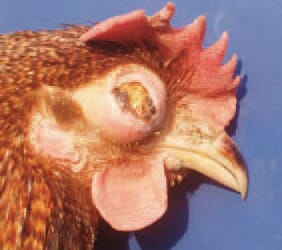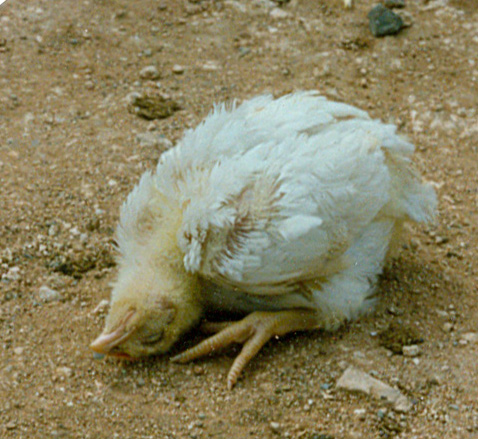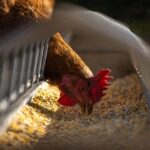Kienyeji chicken rearing is a very productive type of farming in Kenya. Every farmer is concerned about keeping his production costs down while increasing the number of chickens in a cage, since this further increases the profits. For this reason, it is not uncommon to find farmers stocking more than the required number of chickens in a cage. This encourages diseases, some of which can clear the stock within no time.
Four Main Diseases
- Fowlpox
- Newcastle Disease or NCD
- Infectious Bronchitis
- The Infectious Bursal Disease
In between bird stock clearance and restocking your Kienyeji chicken, you will have to be concerned about and prevent these four diseases at the farm.
Fowlpox
Fowlpox is a serious disease with the potential to kill the birds, but most of the time it causes weight loss, stunted growth, and reduced egg production. The chickens also experience depression. Symptoms also include comb eruption and wattle nose.

This disease does not have treatment or cure. It should therefore be contained through antibiotic vaccination to prevent secondary infections. In this case, a fowlpox or pigeon pox vaccination is administered through the wing web method. The vaccination should be done on chicken at the age of 12-16 weeks of age.
Newcastle Disease or NCD
The NCD virus is a worldwide problem for poultry farmers including those in Kenya. It is one of the major diseases in poultry farming and causes many chickens to die in a short time. Symptoms of infection include diarrhea, acute respiratory problem, depression, and nervousness. If infected, your birds may also show poor appetite, twisted neck, and coughing.

The disease can be controlled through vaccination with antibiotics to control secondary infections. The best methods of vaccination are spray or eye drop. It affects chickens of all ages.
Infectious Bronchitis
This is a highly contagious disease signified by nasal discharge, coughing, gasping or noisy breathing, depression, and rales. The disease also lowers egg production and quality. You will also notice that the laid eggs have soft shells. The affected Kienyeji chicken also loses feeding appetite.
The disease is caused by an avian coronavirus, which has spike-like projections on the surface. The virus is an enveloped single-stranded RNA type and produces many strains of the virus due to variation in the viral spike protein. Although the mortality due to this disease is low, it may increase due to the presence of other disease-causing microorganisms.
The disease has no cure. It can be controlled by using antibiotic vaccinations to prevent other infections. The disease affects chickens at any age.
The Infectious Bursal Disease
Also known as Gumboro, the viral disease is acute and highly contagious. It is seen only in chickens older than three weeks. Symptoms include depression, poor feeding habits, unsteady walking, pecking at the vent, and diarrhea. It is controlled through vaccination.
This disease is also prevented by disinfecting and treating the Kienyeji chicken cages or farms with chemicals. Formaldehyde and iodophors should be used to disinfect the farms to prevent the disease. You can also treat the areas with peroxygen, hydrogen peroxide, and a combination of glutaraldehyde and QAC, phenolic compound, and triple salt. It affects Kienyeji chicken at the age of 2-6 weeks.
Know more about Common Diseases Likely to Affect Your Kienyeji Chick


